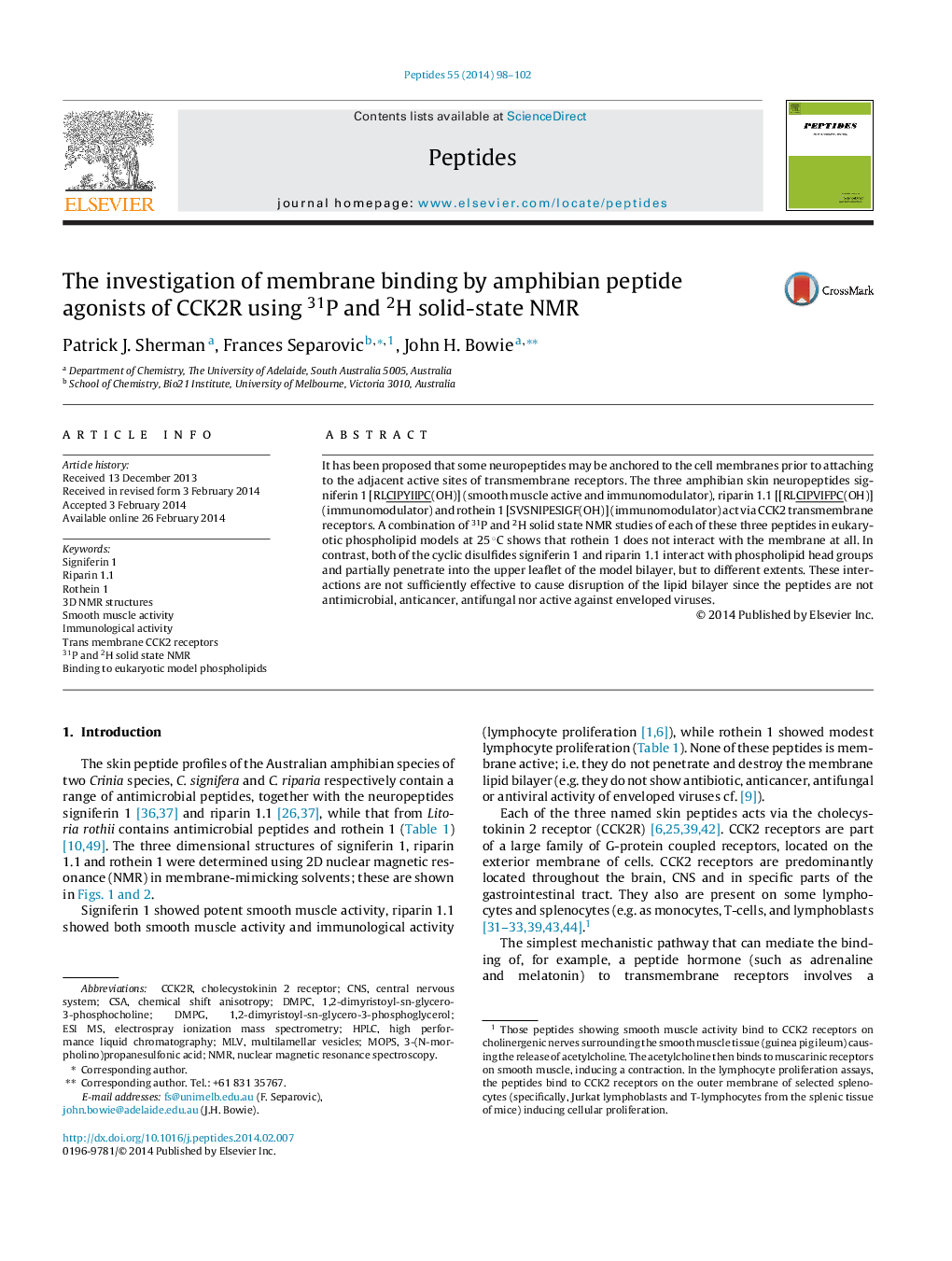| Article ID | Journal | Published Year | Pages | File Type |
|---|---|---|---|---|
| 8348348 | Peptides | 2014 | 5 Pages |
Abstract
It has been proposed that some neuropeptides may be anchored to the cell membranes prior to attaching to the adjacent active sites of transmembrane receptors. The three amphibian skin neuropeptides signiferin 1 [RLCIPYIIPC(OH)] (smooth muscle active and immunomodulator), riparin 1.1 [[RLCIPVIFPC(OH)] (immunomodulator) and rothein 1 [SVSNIPESIGF(OH)] (immunomodulator) act via CCK2 transmembrane receptors. A combination of 31P and 2H solid state NMR studies of each of these three peptides in eukaryotic phospholipid models at 25 °C shows that rothein 1 does not interact with the membrane at all. In contrast, both of the cyclic disulfides signiferin 1 and riparin 1.1 interact with phospholipid head groups and partially penetrate into the upper leaflet of the model bilayer, but to different extents. These interactions are not sufficiently effective to cause disruption of the lipid bilayer since the peptides are not antimicrobial, anticancer, antifungal nor active against enveloped viruses.
Keywords
DMPGESI MSMOPSMLVCCK2RdMPC1,2-Dimyristoyl-sn-glycero-3-phosphoglycerol1,2-dimyristoyl-sn-glycero-3-phosphocholine3-(N-morpholino)propanesulfonic acidChemical shift anisotropymultilamellar vesiclesElectrospray Ionization Mass SpectrometryCSANMRCNScentral nervous systemNuclear magnetic resonance spectroscopyImmunological activityhigh performance liquid chromatographyHPLCcholecystokinin 2 receptor
Related Topics
Life Sciences
Biochemistry, Genetics and Molecular Biology
Biochemistry
Authors
Patrick J. Sherman, Frances Separovic, John H. Bowie,
